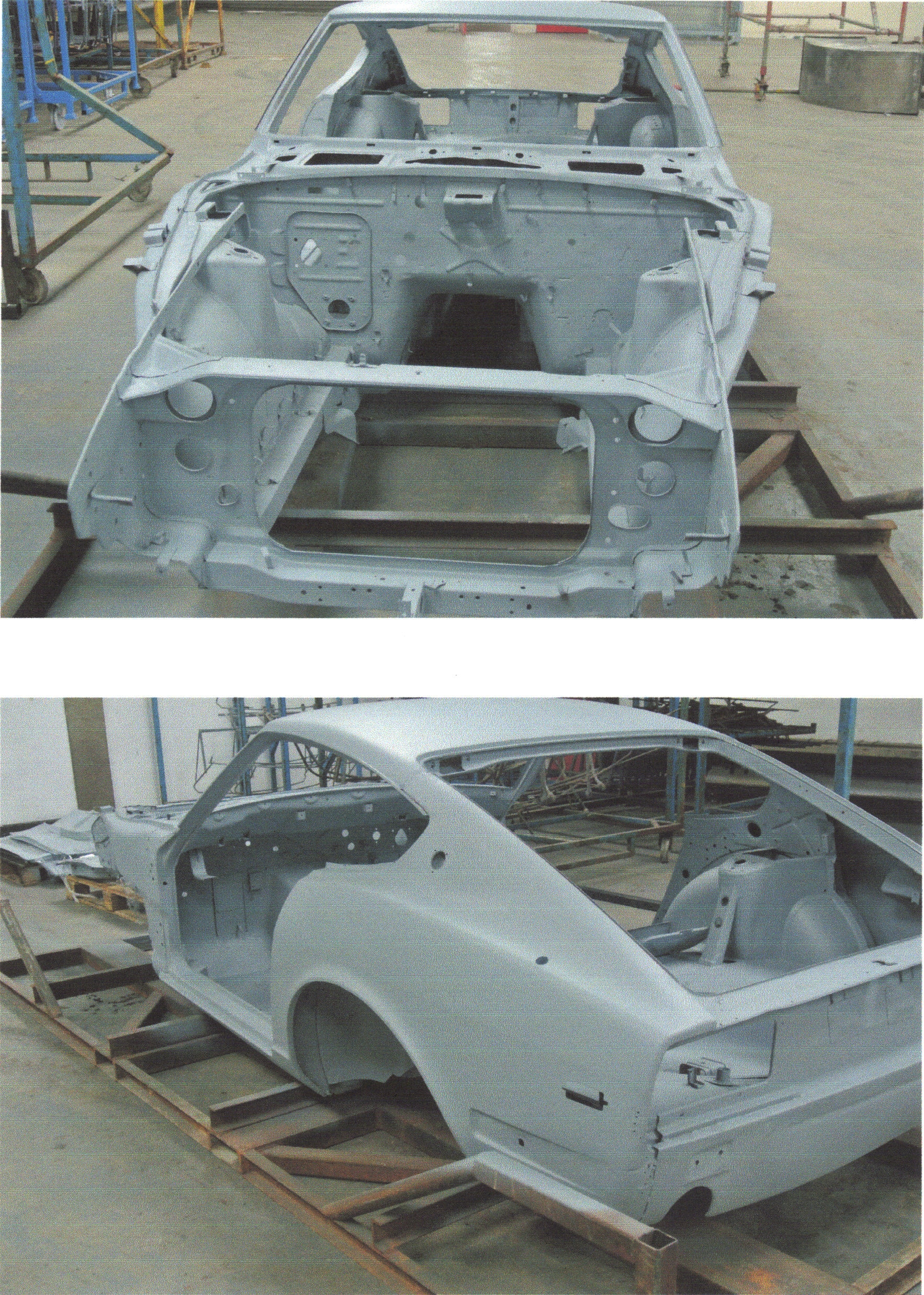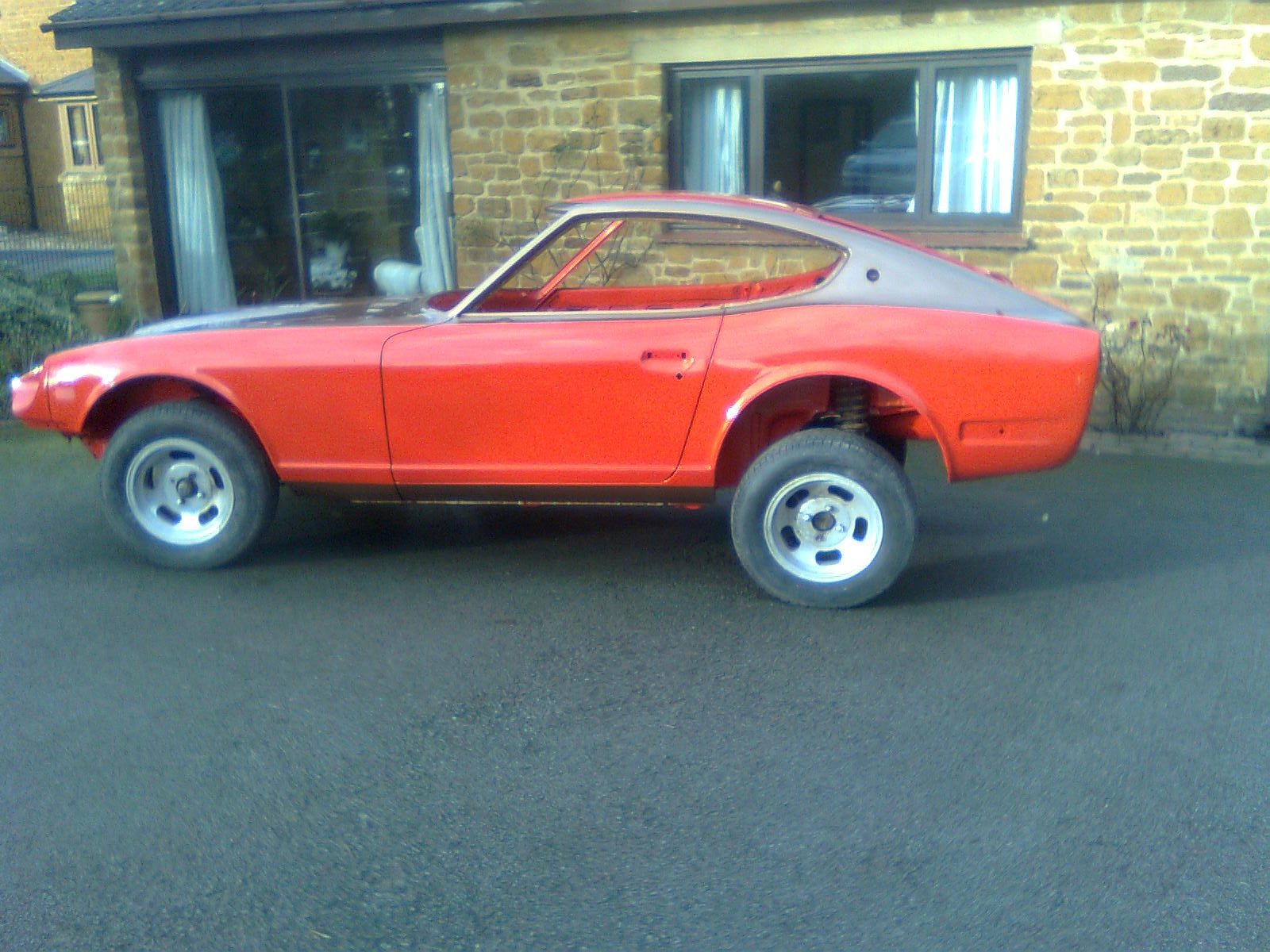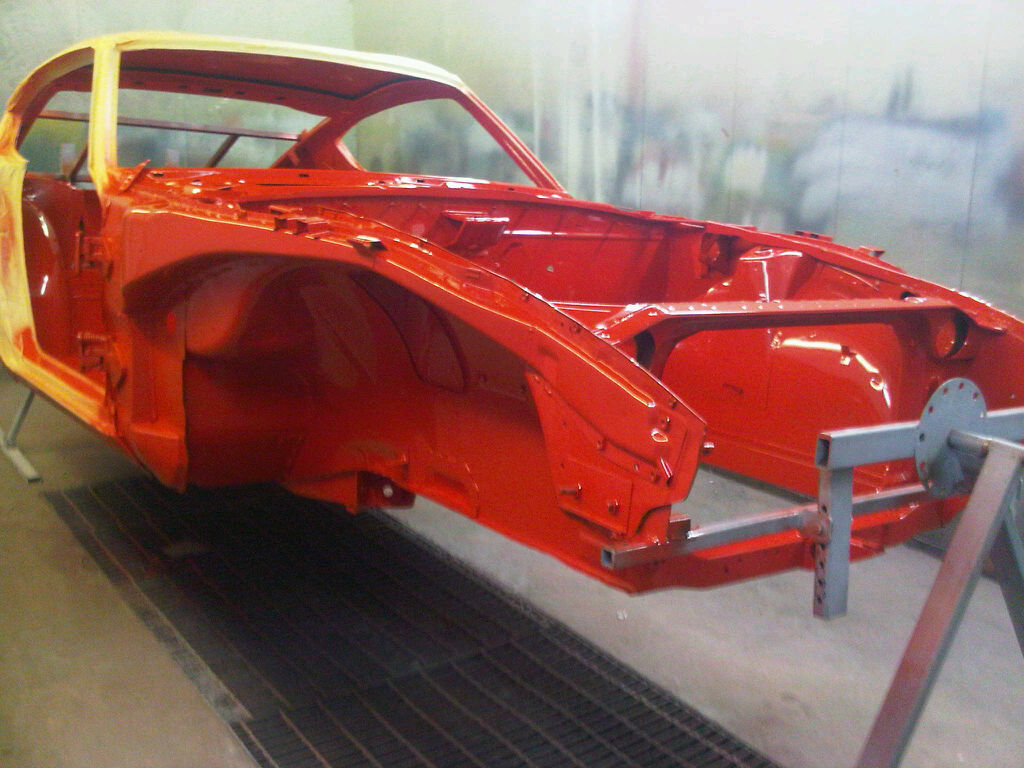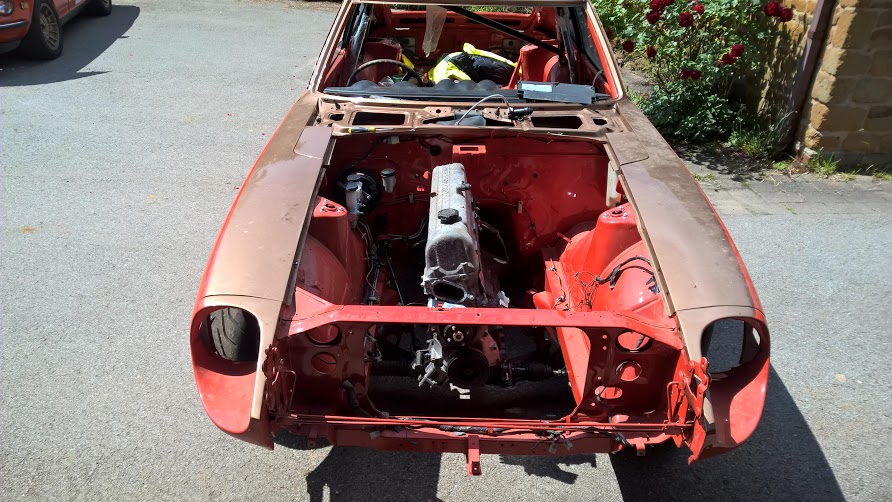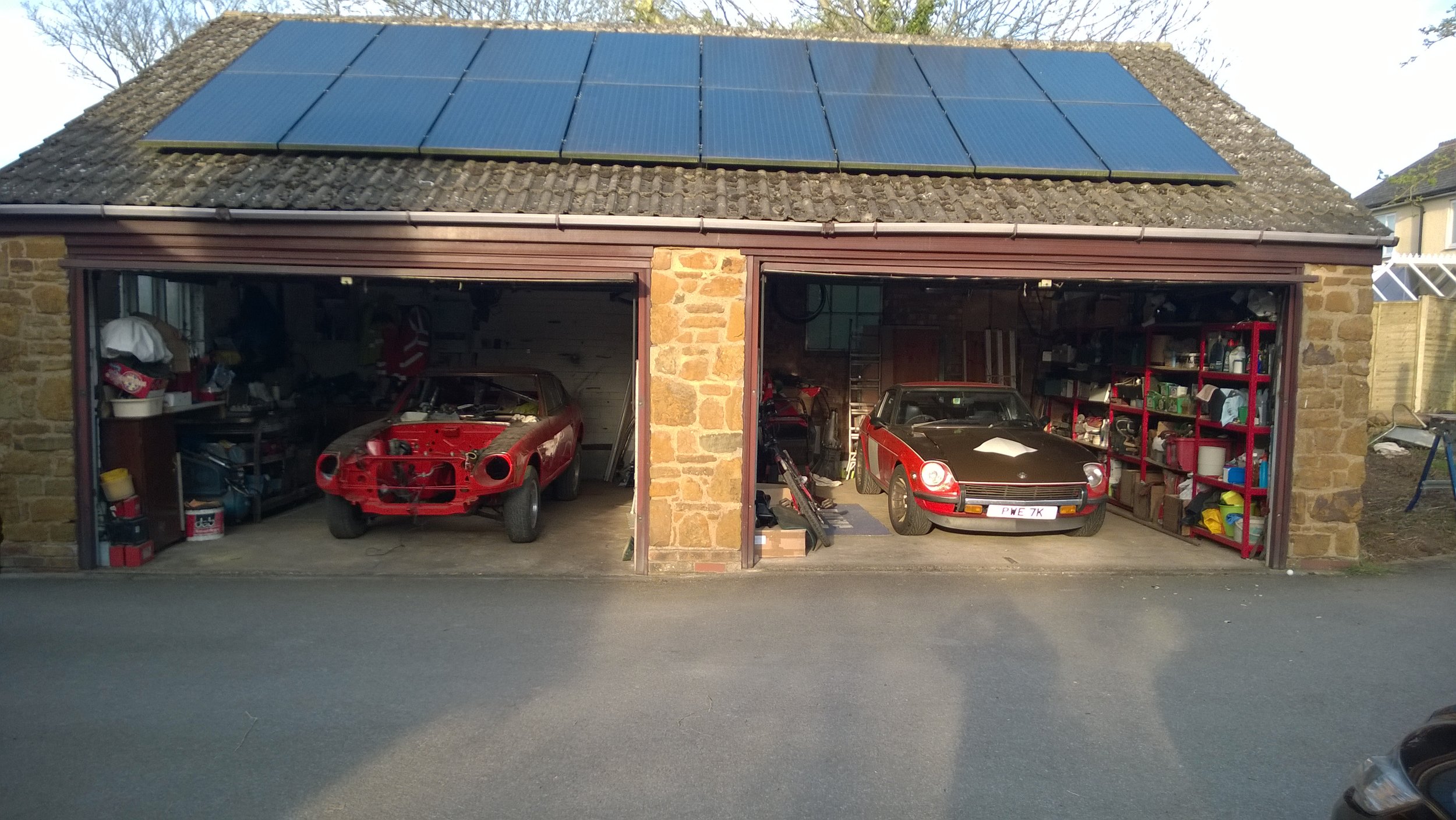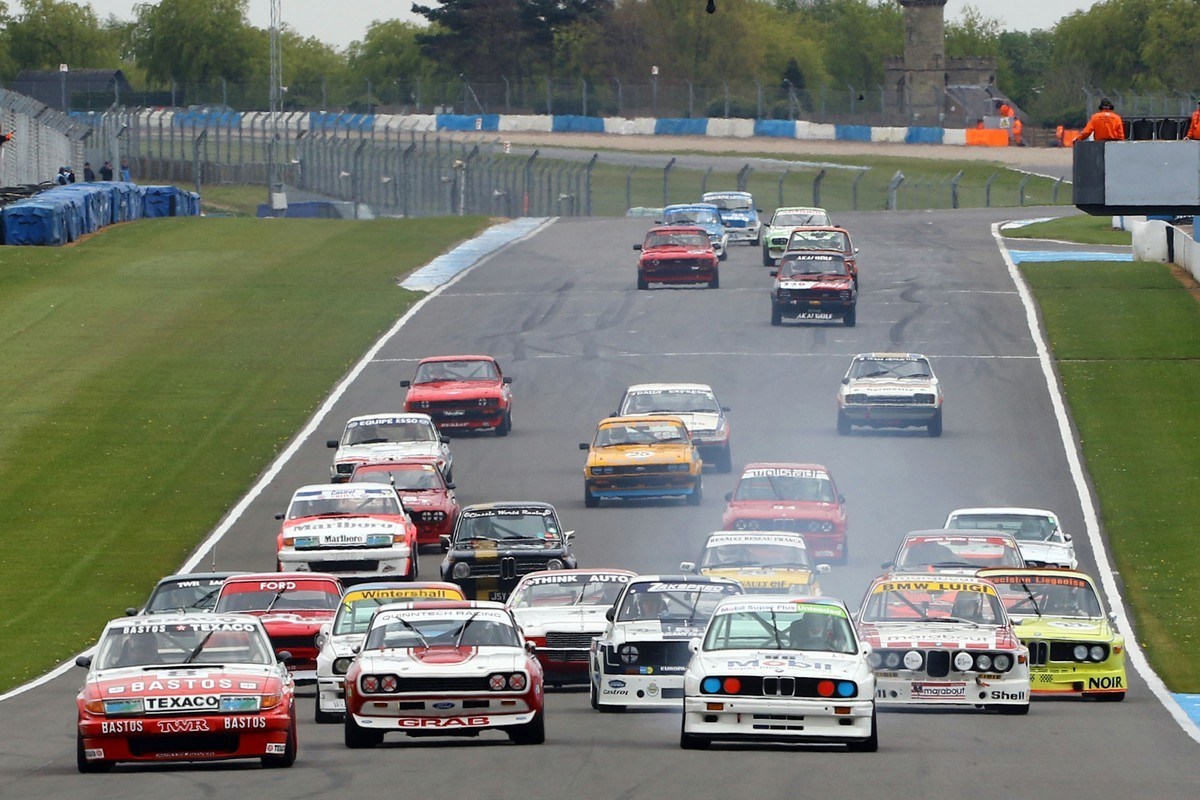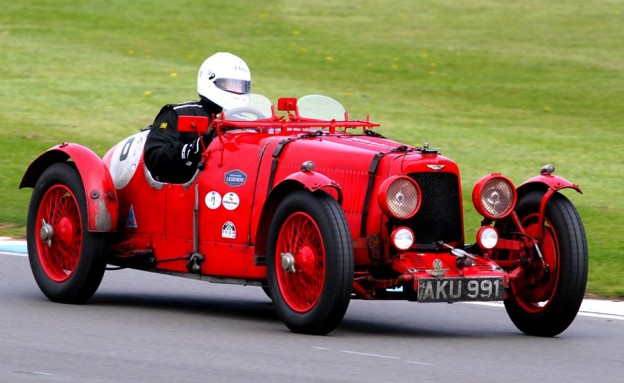CBH -SAMURI MOTOR COMPANY RACE CAR
1987 Champion Kevin Irons CBH Is nearing completion in time for DONINGTON PARK CLASSIC FESTIVAL
Teaser for Donington Park Historic Classic Race
SAMURI MOTOR COMPANY
Whether you’re a long-time enthusiast or have never seen a historic racing car in action before, you’ll find plenty to entertain you at the Donington Historic Festival. After seven very successful years the event is firmly established as a major fixture on the international historic racing calendar, attracting many thousands of spectators, hundreds of world-class historic racing cars and huge numbers of classic car club displays.
BODY LOOKING GOOD
NEW PARTS HAVE BEEN FITTED
CBH | PWE
JOIN KEVIN AT DONINGTON PARK
3/4/5 MAY 2019
SAMURI MOTOR COMPANY
DONINGTON PARK HISTORIC CLASSICS PAST EVENTS
BACK TO 1988 - WITH KEVIN IRONS 240Z CHAMPION
Page 69, April 1988
A preview to the coming Historic season
Thrilling the crowds
Britain is the hub of the motor racing world. That situation has evolved over many years and is reflected in today's historic racing, where the Historic Sports Car Club sets the pattern which the rest of the world follows. As the HSCC steadily develops and supports new areas of interest, so Germany, Australia and Sweden and the other motor racing countries join the movement. That evolution has brought historic racing up to 1970 and its popularity grows every year.
One difficulty for the spectator in historic racing is the division of cars into their many categories. For 1988 the HSCC has reorganised its championships to try and simplify the classes of racing.
The main split is between road cars and racing cars. The road cars have three Championships, all for 1941-1970 models in various stages of improvement. The racing cars, both single-and two-seaters, are divided into a further six categories to provide compatibility of age and performance — the cut off dates, as with the FIA, being 1960, 1965, and 1971.
To cope with its own growth the HSCC, like the Aston Martin Owners Club and many others in the historic movement, has expanded in ten years from the chairman's spare room, to a purpose-built extension and now to 2500 sq ft of designer-modified freehold premises to provide offices, conference room and library, off the M4 in Wiltshire.
The re-organised championships look set to provide close and fascinating racing in 1988.
The HSCC Novices Championship was introduced in 1987 and proved very successful. For drivers vvho had never raced before, in standard production road sports cars and GT cars, on road tyres and driven to and from the meetings, this proved the ideal way to start historic racing. The weekend fun-car became a part-time racer and with instruction and help from the club, anyone with a pre-1970 sportscar could join in the fun. For 1988 the format continues, with a new intake of Novices.
For the graduate novice, the next step is into the HSCC's most popular category, the Road Sports Championship. Now catering for improved road sports and GT cars from 1941 to 1970, the Club will provide two races at its meetings for this group. More than a hundred registrations are expected from every type of the world's sportscars, from Honda S800 to Iso Rivolta, from Fairthorpe to Ferrari, and from Elite to Corvette and Barracuda.
Who are the likely winners? As with all HSCC racing, points are awarded on position in class, so the winner of the baby class has an equal chance with the outright race winner of becoming the Champion, with both Fairthorpe and Cobra among past winners. With the smallest capacity class raised to 1300cc, the Lotus Elites of Michael Campbell-Bowling and Ray Hunter may well end the recent Fairthorpe dominance of the class, although novice graduate John Grist will hope not. Another novice graduate Malcolm Best will keep up the Honda S800 tradition along with Stuart Hutchinson, Mark Anderson and Christopher Martin. The Mini Marcos of Keith Norris and Unipower of Tim Wright will try and make a new "mark" on the class.
The ubiquitous Lotus Elan is the favourite car in the fibreglass bodied class C, but will Don Hands, Nick Blunsden, Phil Cooper, John Jarvis, Martin Ricketts et al be seen off by the Ginetta G4 of Chris Allen, or will the Marcoses of Cyril Baxter or David Chaney intervene?
The metal-bodied cars of Class B include the 1987 Champion Kevin Irons in his Datsun 240Z (the 240Z is allowed in to this Championship on a roll-over year ruling, allowing identical specification models built out of period), who will be hoping for a repeat performance although this year he will have to beat Ferrari (246GT) and Porsche (914/916) as well.
The remaining class is for the over 3000cc cars, and in adition to the Cobras, E-types and TVRs, has Iso Rivolta, Camaro, Corvette, and Barracuda.
The third Championship for road cars is where the works team specification cars are found. The oldest of the HSCC's Championships, the Classic Sportscar category, has been extended to cover the whole period from 1940 to 1970, and is now only for road sports and GT cars, the sports racers having been moved to the racing car category. Eligible cars must have had all improvements homologated in period or have a proven international history in period.
The Championship is split into three periods, pre 1960,1961-1965, and 1966-1970. The works Healeys are set to do battle with the works MGBs, the Cobras and the Morgans; while the Elites, Marcoses and Divas will dispute the small capacity class. In the latest period class some heavy metal is expected in the form of Firebird and Camaro. However, favourite for a third Classic Championship must be Tony Thompson in his very fast and well-driven Lotus Elan 26R. Or will a Ginetta G4R, a Marcos GT or a TVR Griffith outperform him?
And so to the racing car categories.
The big news for 1988 is that AMOC and HSCC have combined to run a pre-1960 Historic Car Championship, renewing the Lloyds and Scottish Championship days. The cars already registered include Lister Jaguars for Andrew Baker and Phillip Benett, 'D' types for Stephen Curtis and Chris Drake, Connaughts for David Duffy, Gerry Walton and John Charles, and 250Fs, Cooper Bristols, various Lotuses, Lola's etc. Sponsorship is being finalised for all the rounds and the planned bonus money should ensure good grids.
The HSCC Pre-'65 Racing Car and Historic F3 Championship follows the FIA format for the period and includes Historic F3 cars through to 1968. Thus, as in the European FISA Trophy, two-seater sports racers such as Lotus 23Bs, Merlyns and Elvas will compete with F1 cars of that period.
Many of these cars use a common engine, the Lotus Twin-Cam, and racing will be close and exciting, with the 1000cc F3 having their own battle within the race. The 1987 FIA European Historic Champion Mike Freeman will be hard pressed by the similar Brabharn of John Harper, whilst the 23Bs of Steve Hitchins and Peter Walker, and the Elvas of Tony Hill and Stirling Moss will be disputing outright victory. Mark Hales' Attilla may occasionally be seen battling with a Lotus 30.
The HSCC Pre-'71 Single Seater Championship is the next period and this year should see the fruition of several years of establishing this category. It seems likely that the Europeans may be about to start a Championship based on the HSCC regulations and this will add even more interest.
New F1 cars this year include Don Wood's Surtees and John Brindley co-driving Mary Foulston's Lotus 72. The F5000 numbers are dramatically increased with the Leda for Alan Baillie, Lola T300s for John Beasley and Geoff Thomas, Lola T142 for Nicholas Buttress, Gerry Walton' McLaren M18, Mike Pendlebury's Palliser, Jon Reakes Surtees TS5 and Brian Cocks in the long-awaited Crossle 15F. The F1s are rejoined by Ian Giles in his Lotus 69, whilst ex-F4 Champion Lorina Boughton joins the fray in one of many March 712s, along with the numerous Brabham BT18, 21, 23, 30 and 35s. This could really be the one to watch in 1988!
The HSCC 2 Litre Championship is the one for the Chevron B8s, where the racing is as close as Formula First but without the accidents. Thanks to championship chairman Don Cressy's hard work, each round is individually sponsored and the resultant bonus money encourages good grids. Amongst the hordes of Chevrons, Michael Schruyver, the 1987 Champion , will be hard to beat but Roly Nix and Richard Dodkins will be alongside him. Wendy Amey (Markey) will be joining the boys and no doubt showing some of them how to do it, whilst the Lenhams and the Crossle C9Ss will be trying to put a different name on the trophy.
The sound and the fury of the Historic GT Championship will be even further enhanced with three more Can Am McLaren monsters re-imported from the USA. Mike Wheatley's BRM and Martin Colvin 's Lola T222 will be hoping to put a different marque on the leader board. John Foulston will be sadly missed, in this his favourite category, but the full grid will no doubt go on thrilling the crowds in the way that he would have done.
The final HSCC category is one that has been quietly growing during the last two seasons, for historically-interesting F1 cars. These races for obsolete F1 cars have provided the only opportunity to see recent F1 cars in action and this year twenty of them are planning to appear, with no less than four Williams FW07 and 08s, the Wolf WR1, Arrows A1, A3 and A8, Tyrell 009, McLaren M30, Lotus 72 and 78 and Toleman amongst them.
Apart from the HSCC's "allcomers" racing, most of the marque clubs run their series for one make cars. These include the Aston Martin Owners Club, Jaguar Drivers Club, MG Car Club, Triumph Register, Club Lotus, Alfa Romeo Owners Club and the Austin Healey Club to name but a few, whilst the saloons come under the auspices of the Classic Saloon Car Club. Historic racing is thriving, and hopefully providing fun and investment for everybody who wants to participate. Brian E Cocks (Brian E Cocks is Chief Executive of the HSCC.)





